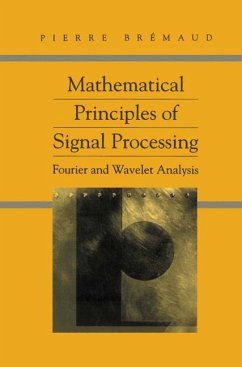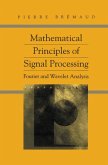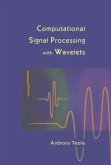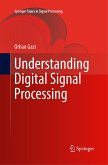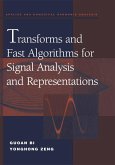Fourier analysis is one of the most useful tools in many applied sciences. The recent developments of wavelet analysis indicates that in spite of its long history and well-established applications, the field is still one of active research.
This text bridges the gap between engineering and mathematics, providing a rigorously mathematical introduction of Fourier analysis, wavelet analysis and related mathematical methods, while emphasizing their uses in signal processing and other applications in communications engineering. The interplay between Fourier series and Fourier transforms is at the heart of signal processing, which is couched most naturally in terms of the Dirac delta function and Lebesgue integrals.
The exposition is organized into four parts. The first is a discussion of one-dimensional Fourier theory, including the classical results on convergence and the Poisson sum formula. The second part is devoted to the mathematical foundations of signal processing - sampling,filtering, digital signal processing. Fourier analysis in Hilbert spaces is the focus of the third part, and the last part provides an introduction to wavelet analysis, time-frequency issues, and multiresolution analysis. An appendix provides the necessary background on Lebesgue integrals.
Hinweis: Dieser Artikel kann nur an eine deutsche Lieferadresse ausgeliefert werden.
This text bridges the gap between engineering and mathematics, providing a rigorously mathematical introduction of Fourier analysis, wavelet analysis and related mathematical methods, while emphasizing their uses in signal processing and other applications in communications engineering. The interplay between Fourier series and Fourier transforms is at the heart of signal processing, which is couched most naturally in terms of the Dirac delta function and Lebesgue integrals.
The exposition is organized into four parts. The first is a discussion of one-dimensional Fourier theory, including the classical results on convergence and the Poisson sum formula. The second part is devoted to the mathematical foundations of signal processing - sampling,filtering, digital signal processing. Fourier analysis in Hilbert spaces is the focus of the third part, and the last part provides an introduction to wavelet analysis, time-frequency issues, and multiresolution analysis. An appendix provides the necessary background on Lebesgue integrals.
Hinweis: Dieser Artikel kann nur an eine deutsche Lieferadresse ausgeliefert werden.
From the reviews: MATHEMATICAL REVIEWS "While many books exits, dealing either with 'theory' or 'applications', the interplay between signal processing and mathematics makes it difficult to find in a single volume the essentials of modern signal processing presented in a way which would be both rigorous for mathematicians and accessible for engineers. This challenge is precisely the purpose of Bremaud's book, and the goal is clearly attained. The presentation is clear, concise and self-contained, all the necessary concepts are put on a firm ground and proofs are worked out in great detail...In summary, the interested reader will find in Bremaud's book an invaluable reference because of its coverage, scope and style, as well as of the unified treatment it offers of (signal processing oriented) Fourier and wavelet basics." "This book wants to bridge the gap between engineering and mathematics ... . What I liked most is the part on subband coding and the fact that bioorthogonal bases are discussed ... . A nice feature of the text is that it stimulates the reader to actively assimilate the material because the theorems (almost all the proofs are included) are interlaced with exercises challenging to immediately apply what has been explained." (Adhemar Bultheel, Belgian Mathematical Society Simon Stevin Bulletin, Vol. 11 (2), 2004) "Brémaud has prepared this graduate-level book to bridge the gap between the mathematical theory of Fourier analysis and the application of that theory to signal processing and other areas of communications engineering. ... To be readable by an engineering audience, the book includes a self-contained appendix on Lebesgue integration. ... Given the importance of the subject matter and the thoroughness of the treatment, this book is recommended for acquisition by any library that supports graduate programs in mathematics, physics or engineering." (D. Z. Spicer, CHOICE, December, 2002) "This volume is a treatise bringing together Fourier analysis and signal processing. ... The book is attractive due to the quality of the presentation and its conciseness. It is likely that engineers will gain mostly from it, but it is also of interest to applied mathematicians who will see developments in the repercussions of their discipline in the applications area." (A. Akutowicz, Zentralblatt MATH, Vol. 1009, 2003) "The interplay between signal processing and mathematics makes it difficult to find in a single volume the essentials of modern signal processing presented in a way which would be both rigorous for mathematicians and accessible for engineers. This challenge is precisely the purpose of Brémaud's book and the goal is clearly attained. The presentation is clear, concise and self-contained ... . In summary, the interested reader will find in Brémaud's book an invaluable reference ... ." (Patrick Elandrin, Mathematical Reviews, Issue 2003 h) "This book discusses the Fourier and wavelet analysis from a mathematical point of view. ... The book contains also a number of exercises which appear inline in the text. ... This book is the only one, to my knowledge, which combines Fourier and wavelets analysis into a single mathematical formalism. This is a strong benefit which makes that I can highly recommend the book to readers with a strong mathematical background." (Jan De Kinder, Physicalia, Vol. 25 (2), 2003)

